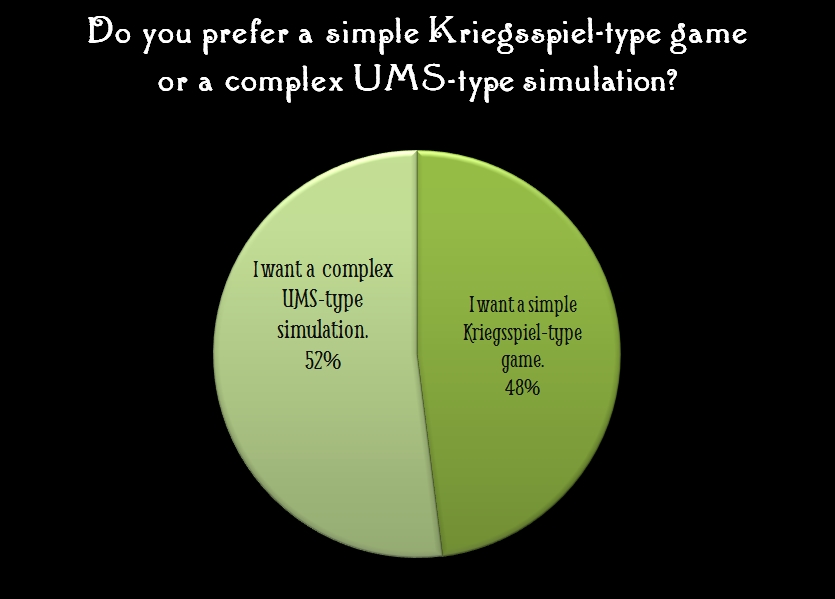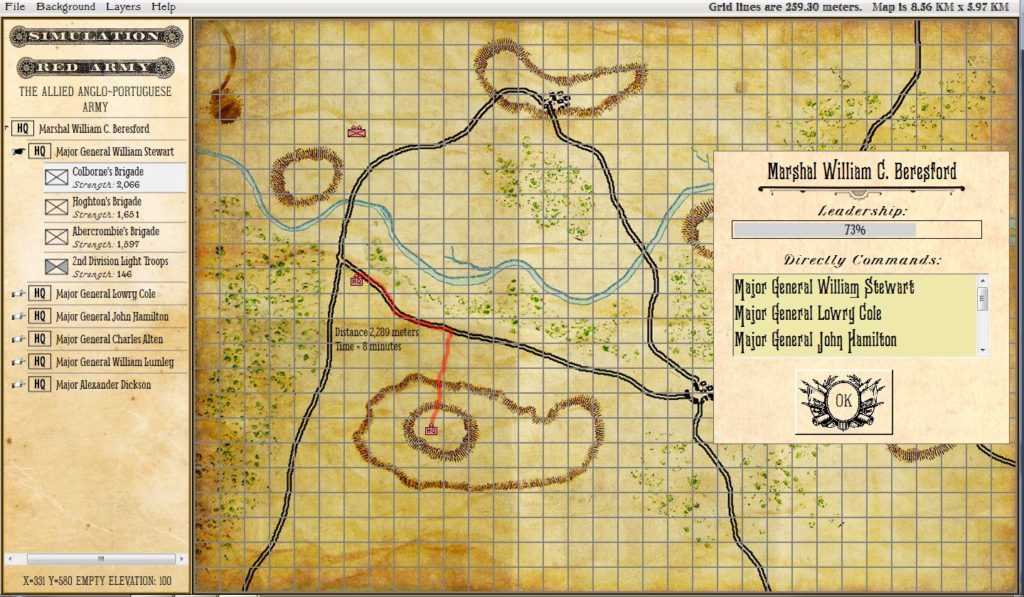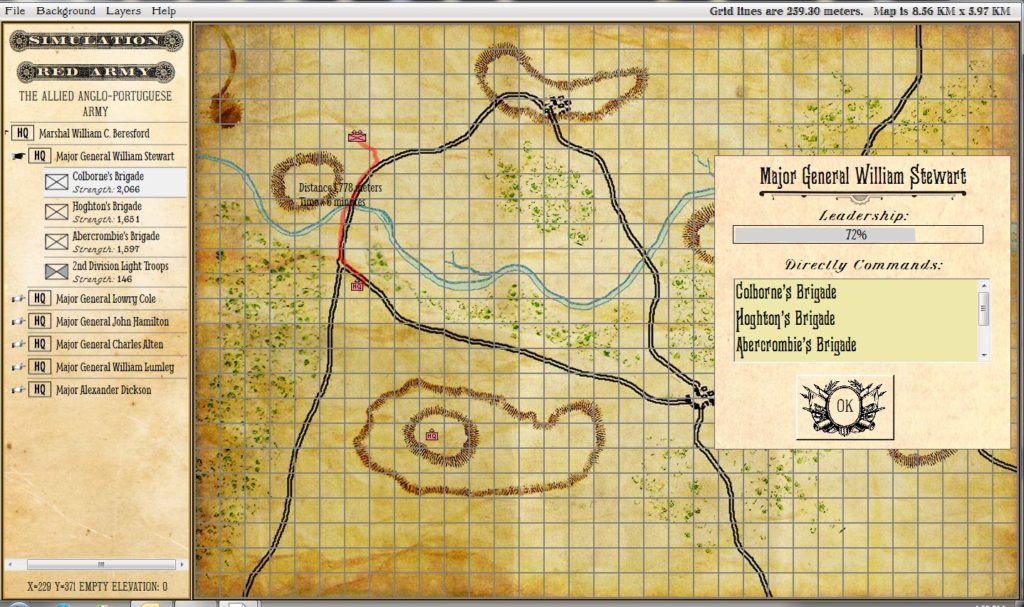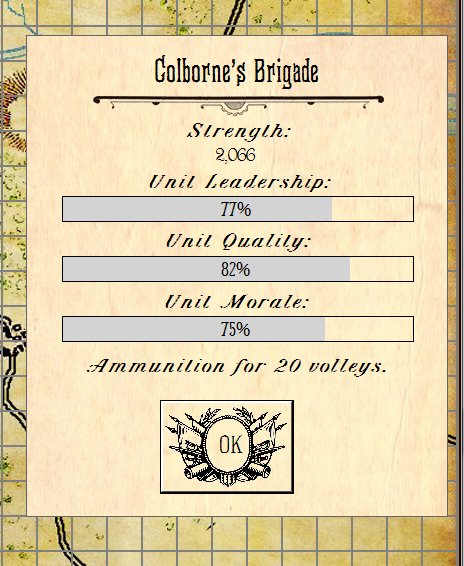I first conceived of General Staff as a very simple, introductory wargame that might be the first real wargame to be released for the Xbox (clearly, an under-served market). However, two things stopped this plan dead in its tracks: first Microsoft closed down the independent online games channel for Xbox and then, after being approached by a major wargame publisher, I was told that there was, “no market for wargames on the Xbox,” however a new version of my UMS series, could, “sell 25,000 units in its first year.”
So, I went back to the proverbial drawing board but I also asked you, the Grognards, what kind of a game you wanted. And here are the results:

Clearly, almost as many people want a simple, Kriegsspiel type game as want a complex military simulation.
After pondering this conundrum I had an epiphany: ‘simple’ wargames and ‘complex simulations’ actually share about 80% of the same code and data. Why not make a wargame that the user can decide which he wants to play? Sometimes people aren’t up for hours long complex simulations; other times people are.

Screen capture from General Staff showing the set up for ‘Simulation’ mode (note the button in the upper-left hand corner). Click to enlarge.
In the above screen capture the user has selected ‘Simulation’ mode. Note that there are headquarters units displayed. Headquarters play an important role in General Staff in simulation mode. All orders are given through the commanding general to the subordinate commander (via courier) and then (again via courier) to the actual unit. For example:

In this screen capture an order from Marshal Beresford will take 8 minutes of game time to be delivered to ths subordinate commander. (Click to enlarge)
It will take 8 minutes for the courier to ride from Marshal Beresford headquarters to the subordinate’s headquarters.

It will take an additional 6 minutes for a courier to deliver the order to the subordinate infantry unit. Click to enlarge.
Additional time (based on the headquarter’s Leadership value) will be added before the next courier is dispatched to deliver the order to the infantry unit. So for a command to go from Marshal Beresford, to Major General Stewart to Colborne’s Brigade will take a minimum of 14 minutes of game time plus additional time penalties based on the leadership abilities of Beresford and Stewart.

Detailed information about a unit in Simulation mode. Even the number of volleys remaining are tracked. Click to enlarge.
Lastly, the leadership of Colborne’s Brigade is used to calculate how quickly the unit will act upon the received orders. This is an example of the detailed Simulation mode for General Staff.
However, in Kreigsspiel mode, all headquarters units are removed and the user issues orders directly to the units that immediately respond to the commands.

General Staff in Kreigsspiel mode. Note the button in the upper left-hand corner, headquarters units have been removed and unit strength is either 1,2,3 or 4.
Also, all unit information except a simple value (1-4) is ignored. Kriegsspiel mode is the simple, introductory wargame that I originally envisioned.

Hello sir.
Seems to be a great work, congratulations and thanks!
I wonder if there will be a Multiplayer system for gamers for Kriegsspiel type game or for the simulation.?
regards,
Hakan (Lancier)
Multiplayer is going to be a stretch goal on Kickstarter.
Thanks for the interest!